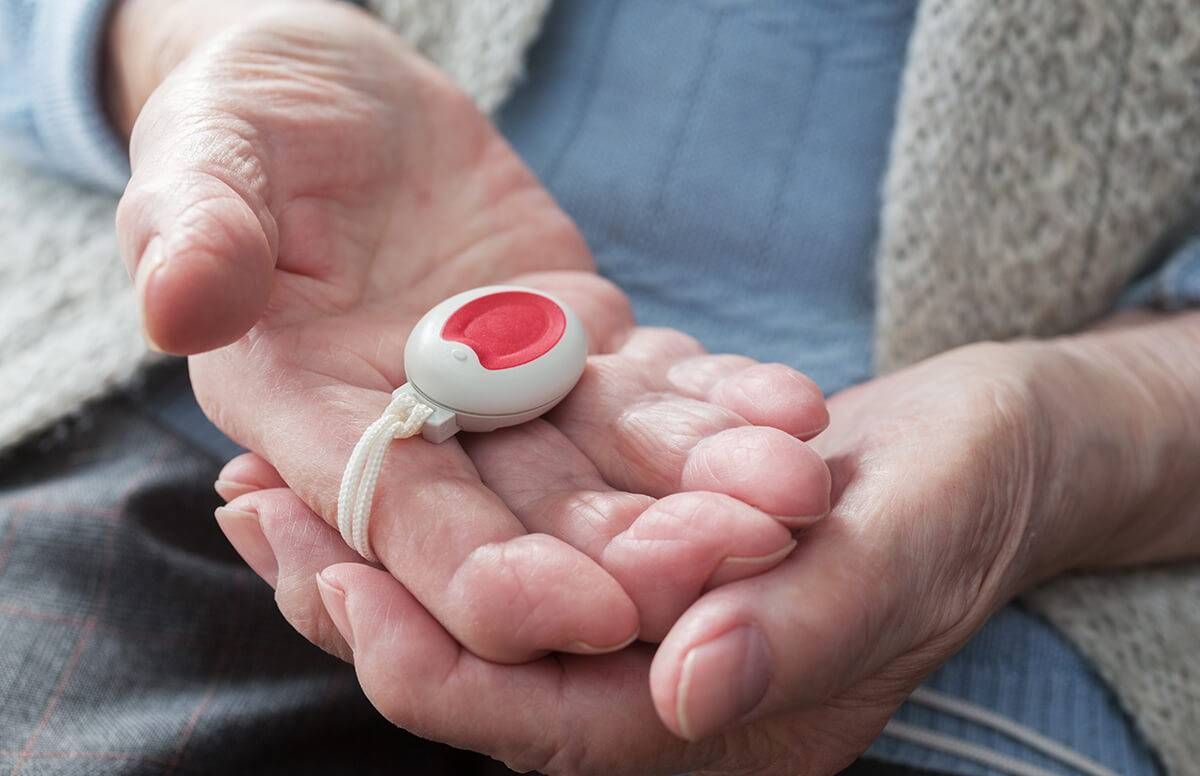Just How Well Do Medical Alert Devices Work?
An independent study showed many have serious drawbacks
(This article originally appeared on the website A Place for Mom.)

Most of us think of medical alert devices as a lifeline for older adults living alone, and the North American market for personal emergency response systems (PERS) is projected to top $3 billion next year, according to Security Systems News, a security industry trade publication. However, an independent consumer advocacy group says that families should understand what a loved one's medical alert device can and can't do before they sign up for a service.
Consumers' Checkbook, an independent, nonprofit consumer organization created by the Center for the Study of Services, recently shared information and recommendations based on tests of 11 personal medical alert devices. The group partnered with the Emergency Communications Center of Arlington County, Va., to test medical alert device response times, and the results were disappointing.
Consumers' Checkbook reported that most of the devices delayed getting help and gave unclear location data. In addition, the fall detection features tested by the group generated a high number of false positives. Most of the devices were also too slow to connect users to dispatch centers.
Most of the devices delayed getting help and gave unclear location data.
What does that mean for families trying to strike a balance between their parents' wishes to age in place and safety concerns? Here's what you need to know about the PERS test results and other options for getting help to your parents when they need it:
Test Results of Personal Emergency Response Systems
Eight of the 11 PERS devices Consumers' Checkbook tested took longer than 30 seconds to connect to their call centers. In most cases, company employees take those calls and then refer emergencies to 911. But the 911 system answers 95% of calls within 20 seconds. During an emergency, longer waits can mean delayed assistance and treatment.
Checkbook also reported several fall-detection false alarms, triggered by small movements like setting the devices on a table. Location data that the devices were supposed to share with emergency responders weren't always accurate, especially for calls from apartment buildings with multiple floors. One device, in use in the United States, mistakenly gave a location in Asia.
In response to the report, one PERS manufacturer pointed out that not all calls made on the devices are emergencies. Sometimes, the company said, users simply need help connecting to a family member or want to talk to someone because they're feeling lonely. Having those requests go to a company's monitoring center rather than 911 frees 911 to handle real emergencies.
Recommendations From the Study
The standout device in Consumers' Checkbook's study was the GreatCall Lively Mobile. Testing showed that its average call wait time was just 23 seconds; call center operators are highly trained and the device includes a push button to skip the call center to connect directly to 911.
If you decide to use a PERS, Consumers' Checkbook recommends testing the device's location detection ability and response times during your free trial period. If you're not happy with the results, you can return it before the trial period ends.
Consumers' Checkbook also recommends filling out your customer profile to make sure the call center has the information it needs to help you in an emergency.
Emergency Alert Device Alternatives
What if you'd rather not get a PERS?
Another option is a cellphone designed for older adults, with larger buttons and preset buttons for 911 and family members. If your parents are tech-savvy, a standard smartphone paired with a smartwatch can let them summon help when they need it. On newer iPhone models, Siri will call 911 if asked. (Amazon's Alexa and Google Home devices can't dial 911 on command — yet.)
For older adults living alone, a reliable cellphone in a pocket, a medical device or a smartwatch on a wrist can make the difference between getting help and being stuck on the floor after a fall with no way to reach the computer or phone.
However, wearable devices can't prevent falls. Make sure your parents' home is as fall-proofed as possible. Clear the floors of hazards, install grab bars in the bathrooms and use brighter light bulbs. It may be time to live on the ground floor of the home if taking the stairs is precarious. Talk to your parents' doctor about medications and fall risk. Get the doctor's suggestions for safer alternatives or extra precautions to take at home.
When someone is falling often or at high risk for falls, it's time to look at assisted living or in-home care. Having a helper nearby can prevent many falls, and caregivers can start first aid and summon help right away. Knowing that your dad or mom has help on hand can give your entire family peace of mind, too.

